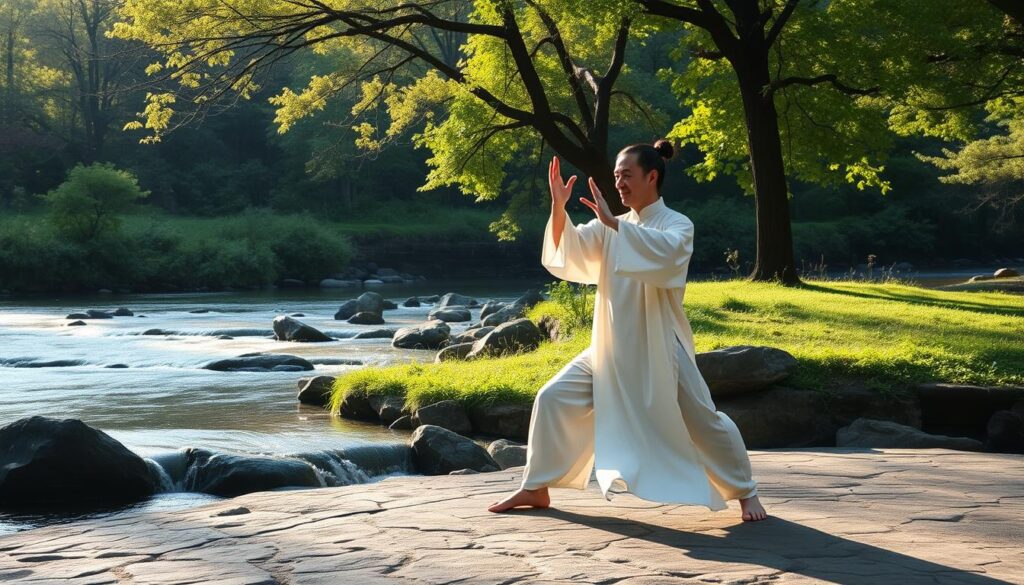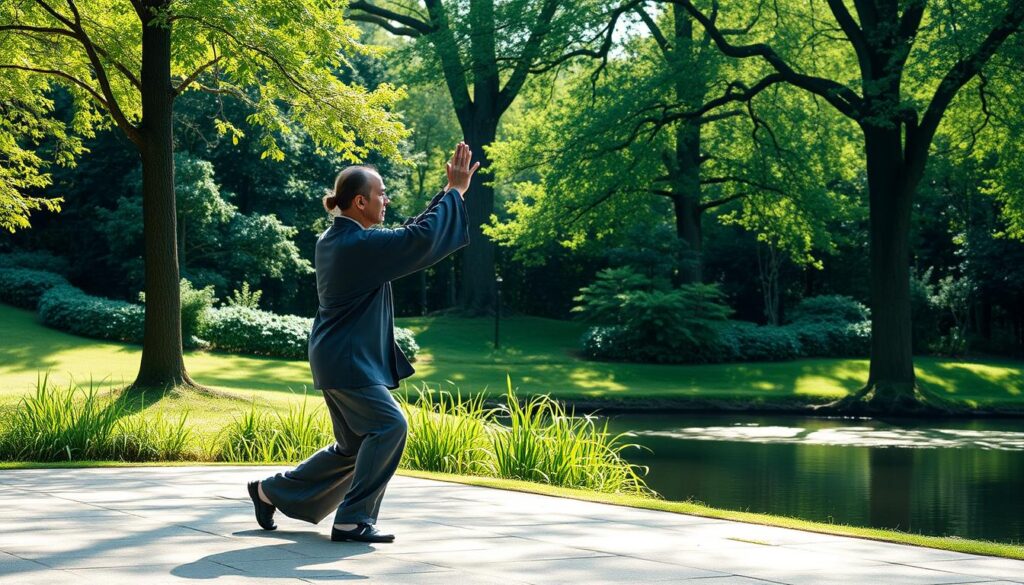Each of the five traditional schools of Tai Chi taught a slightly different style of the art, rooted in the unique styles of the Yang, Chen, Wu (Hao), Wu, and Sun families. These five families, also known as schools, influenced the various forms of Tai Chi, as we know it today and they all stem from the Chen family.
Chen
The earliest verified traces of Tai Chi link back to Chen Wanting, as discussed in the previous section. He integrated various elements of Chinese philosophy into it, including Ying-Yang principles, Tui Na (techniques to receive and expel energy) and Daoyin techniques (to guide your energy).
These techniques were part of Traditional Chinese Medicine, which date back many years. Chen Wanting also included boxing styles from various martial arts practices into his version of Tai Chi.
As Chen Village leader, Chen Wanting made sure, to pass along this Chen-style Tai Chi to future family generations, and it became a great characteristic of the Chen family. When the Qing Dynasty began to decline and a Republican government emerged in China, Chen-style Tai Chi became widely popularized and spread internationally.
In 1981, the Chinese government openly supported the practice and helped to support the building of martial arts schools. This helped to further promote the practice and has led to a growth of Chen-style Tai Chi schools in Western countries today.
Yang
Chen Changxing was the first to teach Tai Chi to someone outside of the family, Yang Luchan. However, Chen Changxing slightly modified the art, creating two routines that became known as Small Frame and Big Frame, also known as First Form and Second Form (popularly called Cannon Fist). These routines led to the development of Yang-style Tai Chi, the most popular of the five schools today.
During the late 19th century, Yang Luchan’s family spread Yang-style Tai Chi throughout the entire Qing Empire. Its practice continued to grow, particularly after the Qing dynasty fell and people began seeking improved methods of traditional Chinese theories. Yang Chengfu standardized the family style, which people all over the world practice today.
Wu (Hao)
Wu Yu-hsiang was a student of Yang Luchan (the original founder of Yang-style Tai Chi), who is credited with the development of Wu (Hao)-style Tai Chi.
Wu Yu-hsiang taught the art to his nephew Li l-yu, who taught it to Hao Wei-chen, who taught it to Hao Yueh-ru. In an attempt to teach Tai Chi to larger beginner-level classes, Hao Yueh-ru modified the routines by reducing the number of snap kicks and jumps and incorporating smaller, subtler movements. This is why the name “Hao” is incorporated within the name of Wu (Hao)-style Tai Chi.
Compared with the other styles, Wu (Hao)-style Tai Chi more heavily emphasizes an internal (meditative) focus as well as balance techniques and slower movements. While this style grew in the 1920s under Hao Yueh-ru, it is not as popular today. Only a few Chinese practitioners still teach it.
Wu
Wu Quanyou was a student of Yang Luchan, and then became a loyal follower of Yang Luchan’s oldest son Yang Banhou. Wu Quanyou taught the art to his son Wu Jianquan, who made slight changes to it and widely taught it among family. In 1935, Wu Jianquan founded the Jianquan Tai Chi Chuan Association in Shanghai.
From there, the practice spread widely to Beijing and other parts of China, as well as the Western world. It incorporates pushing hands movements and weapons training.
Wu-style Tai Chi is the second most popular form of Tai Chi practiced today, after the Yang-style.
Sun
Sun Lutang learned Wu (Hao)-style Tai Chi from Hao Wei-chen, the primary student of Li l-yu, who was the nephew of the founder of Wu (Hao)-style Tai Chi, Wu Yu-hsiang. Sun Lutang was already a known expert in other forms of martial arts and went on to study other Tai Chi theories and techniques from other scholars and practitioners.
His expansive knowledge and skills led to the development of Sun-style Tai Chi, a practice with unique foot movements that emphasizes continuous, flowing movements and circular hand gestures.
Sun Lutang passed on the practice to his Children, who passed it to their Children and still teach it today in Beijing. It is considered the fourth most popular style out of the five schools.



